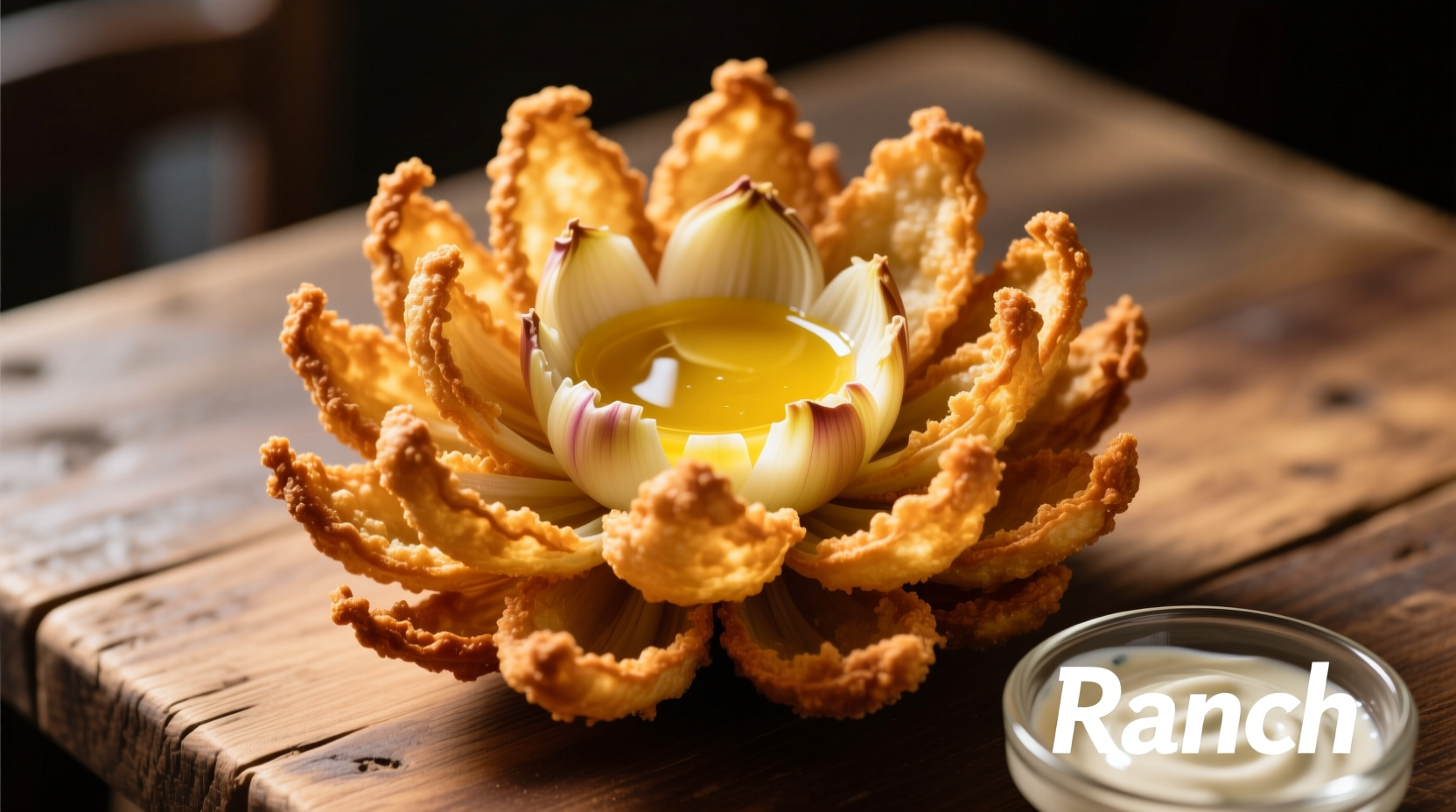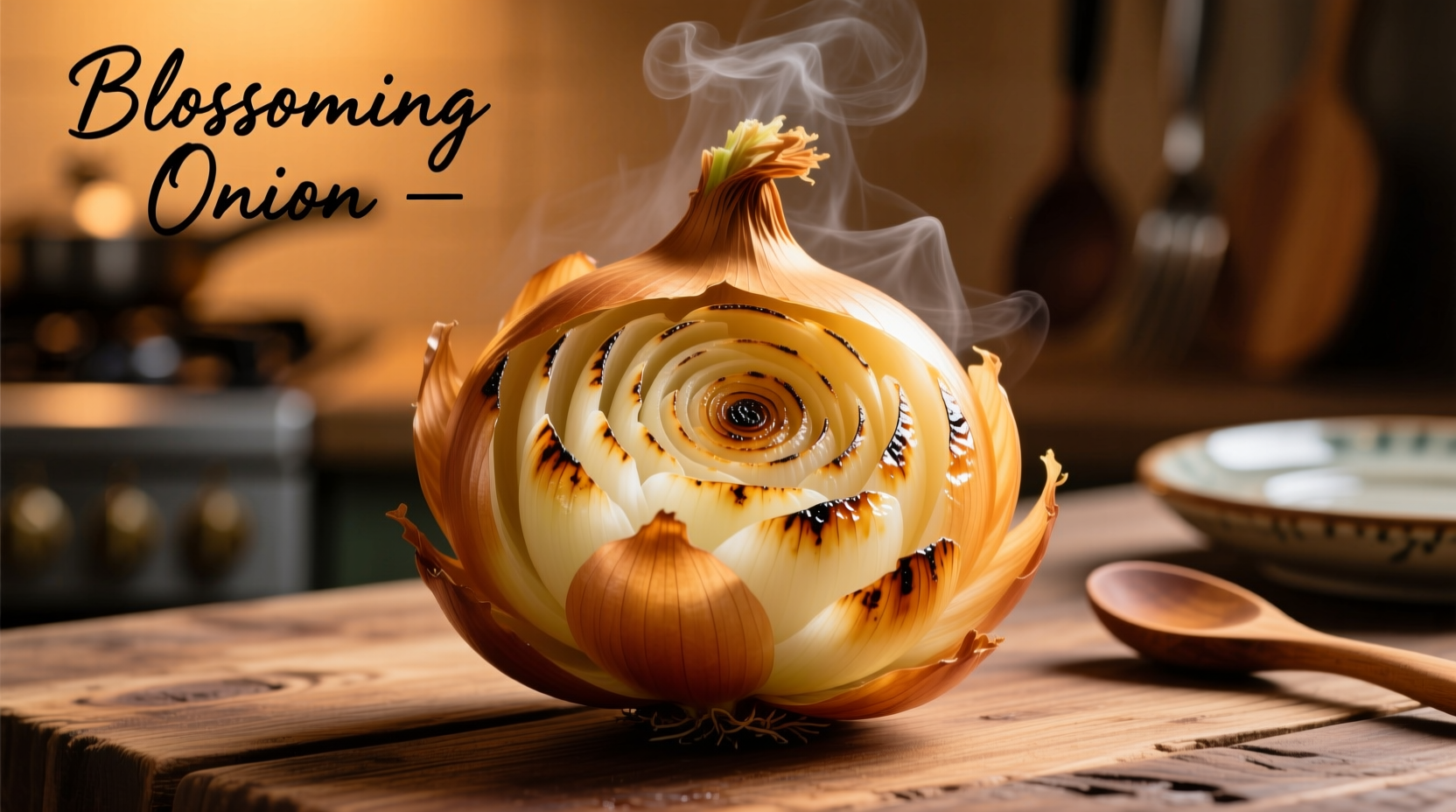The Story Behind America's Favorite Onion Appetizer
When you see that distinctive flower-shaped onion sizzling on a platter, you're looking at culinary innovation that changed American dining. The blooming onion wasn't born in some ancient kitchen but emerged surprisingly recently in restaurant history. Understanding its origin helps appreciate why this dish became a cultural phenomenon.
| Timeline | Key Development | Impact |
|---|---|---|
| 1988 | Created by Outback Steakhouse chefs in Tampa, Florida | Designed as signature appetizer to differentiate new restaurant chain |
| 1990s | Became Outback's most popular menu item | Sparked copycat versions across American casual dining establishments |
| 2000s | Home cooking adaptations emerged | Cookbook publications and YouTube tutorials made preparation accessible |
| 2010s-Present | Health-conscious variations developed | Air fryer methods and baked alternatives gained popularity |
What Makes a True Blooming Onion
Not all flower-shaped onions qualify as proper blooming onions. The authentic version requires specific components that create its signature appearance and taste:
- Onion selection: Large sweet onions (Vidalia or Walla Walla) with 3-4 inch diameter
- Cutting technique: Precise vertical cuts from root end while keeping root intact
- Batter composition: Cornstarch-based mixture with paprika, cayenne, and garlic powder
- Cooking method: Deep-frying at exactly 350°F (175°C) for 2-3 minutes
According to culinary research from the National Museum of American History, the blooming onion represents a unique American culinary invention that blends technical precision with theatrical presentation—a combination that explains its enduring popularity since the late 1980s.
Your Step-by-Step Guide to Perfect Blooming Onions
Creating restaurant-quality blooming onions at home requires attention to detail at each stage. Follow this professional chef-tested process for best results:
Preparation Essentials
Before you begin cutting, gather these critical items:
- 1 large sweet onion (Vidalia preferred)
- Sharp chef's knife
- Wooden skewer or toothpicks
- Deep fry thermometer
- Cornstarch-based batter (not flour-based)
Cutting Technique That Makes the Difference
The cutting process determines whether your onion will properly "bloom." Professional chefs recommend this method:
- Remove outer skin and trim top 1 inch while keeping root intact
- Place onion root-side down and make 16-20 vertical cuts from top toward root
- Cut just deep enough to reach but not sever the root
- Gently separate layers while preserving structural integrity
- Secure with wooden skewer through root to maintain shape during cooking

Frying for Optimal Texture
Temperature control separates successful attempts from disappointing results. The National Center for Home Food Preservation confirms that maintaining precise oil temperature is critical for proper batter adhesion and texture development:
- Heat oil to exactly 350°F (175°C) before adding onion
- Submerge onion completely for even cooking
- Fry for 2-3 minutes until golden brown
- Drain vertically to preserve flower shape
- Serve immediately while crispy
Healthy Adaptations Without Sacrificing Flavor
While traditional preparation involves deep-frying, modern techniques offer alternatives that maintain flavor while reducing oil absorption. Research from the US Department of Agriculture shows these methods can reduce fat content by up to 70%:
| Method | Temperature | Cooking Time | Texture Result |
|---|---|---|---|
| Deep Fry (Traditional) | 350°F (175°C) | 2-3 minutes | Crispy exterior, tender interior |
| Air Fryer | 400°F (205°C) | 10-12 minutes | Slightly less crispy but still flavorful |
| Baked | 425°F (220°C) | 15-18 minutes | Softer texture, less oil absorption |
Avoiding Common Preparation Mistakes
Even experienced home cooks encounter challenges with blooming onions. Understanding these limitations prevents disappointment:
- Onion selection matters: Regular yellow onions lack the necessary sweetness and texture—always use Vidalia or Walla Walla varieties
- Temperature precision is non-negotiable: Oil below 340°F creates greasy results; above 360°F burns the batter before cooking through
- Don't skip the cornstarch: Flour-based batters won't achieve the signature crispness
- Root integrity is crucial: Cutting through the root causes the onion to fall apart during cooking
Serving Suggestions That Elevate Your Dish
The perfect dipping sauce complements rather than overwhelms the delicate onion flavor. Professional chefs recommend these pairings based on flavor chemistry principles:
- Cajun remoulade: Mayonnaise base with paprika, cayenne, and garlic
- Lemon-dill yogurt: Lighter alternative that balances richness
- Spicy mustard: Complements the onion's natural sweetness
For presentation, serve upright in a tall glass to showcase the flower shape, with sauce in a small ramekin alongside. This mimics the professional presentation that makes blooming onions visually distinctive among appetizers.











 浙公网安备
33010002000092号
浙公网安备
33010002000092号 浙B2-20120091-4
浙B2-20120091-4